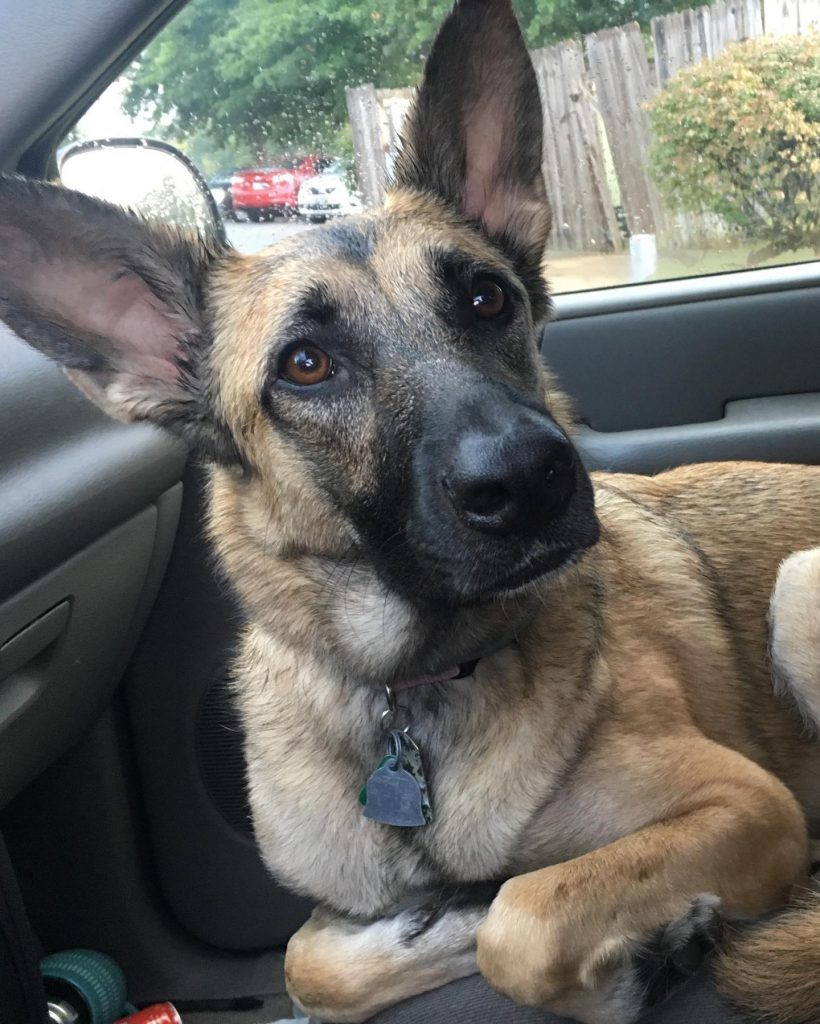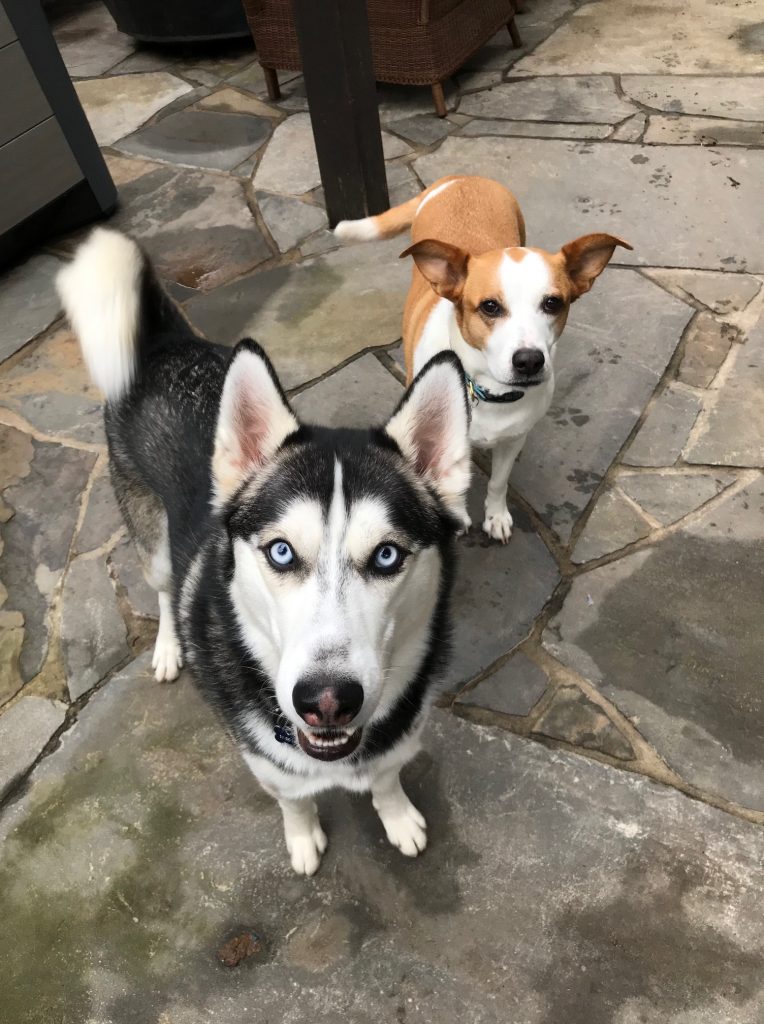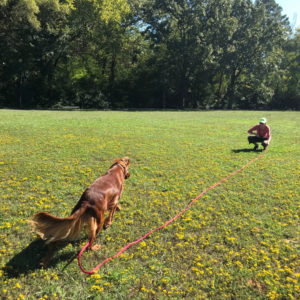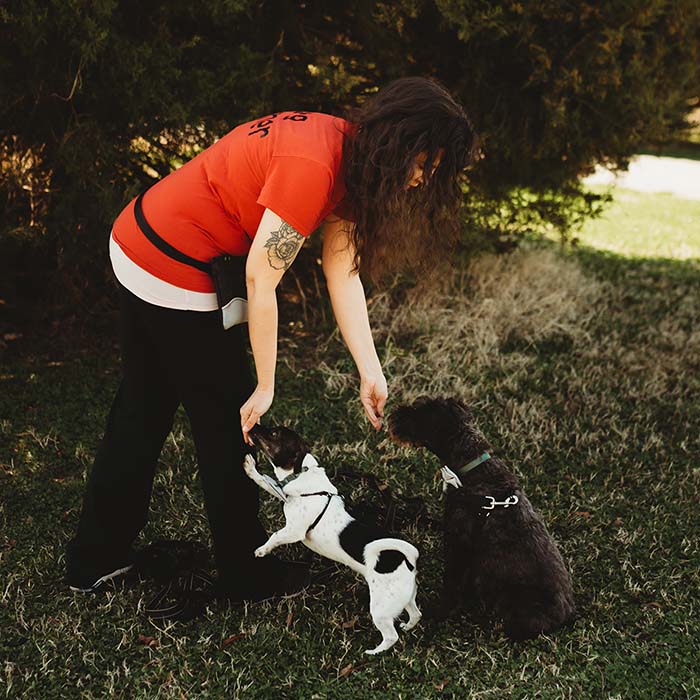Twelve Steps to Rescue
Success begins before bringing the dog home
Hello: July has been a whirlwind! Ever since the holiday, I’ve been swamped with private lessons, training walks, and classes. It’s been exciting and I’m very thankful for all of my awesome clients who have continued to trust me with their pups. Classes are almost done with this round and I’m very proud of all of the dogs and their people who have been showing up every week and putting in the work! Puppy parties are still drop-in every Saturday (RSVPs required) and the next round of classes will start in about a month. Masks are required, as there doesn’t seem to be an end to the pandemic in sight. I want to do my part to keep everyone safe. Otherwise, there’s a lot of good stuff on the way. Thanks for being here.
Before You Bring Your Dog Home
1. Consider your lifestyle
Think about your desired dog and if he’ll fit into your family. There are a lot of sizes, shapes, and colors of dogs out there, and it’s easy to get caught up in love at first sight.
>> Non-shedding breeds. Poodles and doodles may sound ideal, but they aren’t low maintenance. They require a professional groomer every four to six weeks, along with daily brushing. These costs of both time and money can quickly add up.
>> Border collies and Australian cattle dogs. Highly intelligent breeds can make you think of all of the possibilities, like agility or trick training. But they also need a lot of mental stimulation. If you don’t find them a job, they will find their own. We promise, you aren’t going to appreciate their idea of a hard day’s work.
>> Mastiffs and bulldogs. Guard dogs can seem like the best of both worlds, a cuddly companion who protects you and your family. But they can also make having friends over a challenge, and they may have reactivity in cars, at the front door, or when they spot any visitors out of the front window.
>> Labs, pointers, and huskies. When you have a dog that requires an immense amount of exercise to stay happy and out of trouble, there are no days off. There’s no Netflix and nap all weekend. You’ll be like the mailman: rain, snow, sleet, or hail won’t keep you from your daily dog walks.
>> Hound dogs. If you’re looking for a breed that’ll stick around while you hit the trails where dogs can run free, then disregard breeds designed to hunt, like beagles. They’ll get on a scent and be gone.
Are there exceptions to the norm? Absolutely. You may find a hound dog who would rather nap than run in the forest for hours or you may find a husky who loves to do what you ask. Breed standards give us an idea of what to expect, but all dogs are individuals.

2. Find your dog
There are lots of ways to find a dog, especially in the south. With a warmer climate and a lack of access to resources, dogs can fend for themselves for longer without the threat of freezing to death in the winter, like in the north. With dogs being regularly bred or dumped, there will always be a need for foster or permanent homes. However, just because a dog is listed as free doesn’t mean that the dog won’t cost money. Often, free puppies have had no health care or vaccinations, making them at risk for serious diseases.
I offered to foster a small dog my friend had found, and because the dog had been dumped, she had two different types of worms and had not been spayed. When all is said and done, the dog, at 7.5 lbs, will be over $500 in medical expenses. Getting a dog through a shelter or rescue means paying a fraction of the total costs, or as little as $80-$200, because they have the resources through volunteers and fundraising to take care of the dog and find a good home.
>> Shelters. Little Rock and the surrounding areas have an abundance of shelters: Maumelle, Cabot, Sherwood, La Plata County, and more. Some will waive their adoption fees (but maintain their vetting process of homes) now and then in order to clear the shelters. With COVID-19, more shelters are doing online or social distancing meet and greets.
>> Nonprofit rescues. There are also a lot of organizations, like CARE for Animals, that offer foster-based programs. This means that dogs don’t have to go through the stress of a shelter while they’re waiting for their permanent home. Dogs also tend to be less stressed in general, and potential new owners will have a better idea of their behavior and personality. CARE also offers Paws in Prison, which helps train dogs that might need some help with basic manners. This is a fantastic way to help inmates learn valuable skills and get affordable training. However, PIP does not mean that a dog is perfectly trained — training should still be maintained after adoption, and training helps build communication between human and dog.
>> Breed-specific rescue. When looking for a certain breed, it’s only a matter of time until that breed can be found in a shelter. Plus, there are breed-specific rescues across the country that have dogs of all ages available. some rescues can be challenging to adopt from, depending on their requirements. Don’t let breed stop you from rescuing.
>> Online. There is no limit of Facebook groups, posts, and friends that have puppies available. People are constantly looking to rehome dogs or get rid of puppies. Be wary of free dogs, as most responsible people will require a rehoming fee to find a family that will take care of the dog financially. Also, if you go this route, be sure to get the dog seen by a vet as soon as possible. A lot of dogs in the south have heartworms and may have other issues, like worms or parvo. Backyard breeders or puppy mills may also use this route to sell puppies, which sustains a neglectful cycle.

3. Request help
Often, rescues have volunteers or staff that can match you to a good fit if you know what you’re looking for. You can also hire a certified professional dog trainer, who can offer options to help with everything from scoping out available dogs, going with you to meet and temperament test candidates, assisting with integrating the dog into your home, and answering any questions that may arise over the following weeks and months.
4. Ask questions
When looking at a dog, come up with specific questions regarding the behavior listed on the kennel card or website. If the bio says something like, “very protective of family,” does that mean the dog is aggressive towards strangers? Or if it says “shy in new situations,” does that mean debilitating anxiety?
Sometimes rescues utilize a “used car salesman” mentality that can gloss over very real issues. Perhaps the issues aren’t deal breakers, like the person who works from home and who can handle separation anxiety. But do the work to figure out what you can accommodate and what you can’t, or what you can learn to handle with the help of a trainer or what might be too much.
You’ll want to know as much as possible before that dog arrives at your home.
Plus, ask how long the dog has been in the shelter and why. Does he have any interest from other people? Does he need a certain type of home? Has he performed poorly at meet and greets? Has he been returned? How many times and why?
Ask about the details.
Does the dog have a bite history? How serious or frequent was it? What are the triggers? Triggers can be manageable things, like not putting your face in the dog’s face, or not giving the dog high-value food items or not cornering the dog. These things might not work for a family with small children, but might be fine for a couple or a single person who can manage the behavior.
Avoid emotion-based decisions and ask for the facts. Don’t believe opinions or stories without facts to substantiate. Avoid conjecture that relies on guessing what a dog was feeling or thinking and consider what directly led to a behavior or reaction instead.
Adoption counselors, volunteers, or staff are typically there to advocate for the animals in their care. This is important and helpful for the animals, but if the individual begins opining on why a dog has been returned, ask for the facts and just the facts. Try to wade through opinions gracefully.
Knowing as much as possible helps potential owners make informed decisions.

5. Think about the dog’s needs
Dogs are not low-maintenance pets, no matter how you slice it.
Whether you obtain a puppy from a breeder or an adult from a rescue, you’re going to need to do some work. There are a few select dogs who will walk into your home and fit seamlessly, but more often than not, some legwork will be needed.
This can include house training, heartworm medication, separation anxiety, or reactivity on walks.
Consider if you can physically, financially, and emotionally support the dog that you are bringing into your life with the resources that you have. If you are worried that the amount of work, time, or money it will take to bring the dog to a place that you can live with him is overwhelming, save yourself (and the dog) the heartache and move on to the next candidate without becoming attached.
6. Cast a wide net
There are a lot of dogs out there. Over 3 million dogs enter shelters every year, which means there’s a good chance of finding one that’s the perfect fit for you.
Sometimes you have to meet several different dogs to know which one would be a good fit. Not everyone marries the first person they date. What may be a dealbreaker for you, isn’t necessarily a dealbreaker for someone else. So don’t impulse buy! Move on until you find your perfect match.

After You Bring Your Dog Home
7. Provide time to decompress
There’s a higher rate of success with gradual work when it comes to dogs, especially if there’s a lot of changes or other disruptions happening in their life. Dogs often need time with gradual transitions to get used to a new situation, schedule, and rules.
Keep your new dog confined to one area of the house for the first day or so, or on a leash if your dog is a protective breed. This rule was a big deal for Maslow, my sister’s dog, who was known to charge and react. He’d been returned twice already for troubling behaviors. He’d met me and been fine, but when I left for an hour and came back, he charged. Because he was on a leash, she was able to manage behavior that could have been frightening without that safety net.
8. Introduce gradually
Have a gradual process of introducing your new dog to existing dogs in the home. It is always best to start slow and introduce them outside first, watching for body cues. With notes from the shelter, rescue, or foster, this may not be needed for every dog, but use caution if you’re not sure.
>> Have the new dog in the house, confined to one area. The other dog may know that they’re there, but don’t allow them to meet just yet, just get used to each other’s scents. See how they react. Are the dogs curious? Are they offering loose and wiggling bodies in reaction to the new smells? Are their hackles up? Is their body tense? Are they vocalizing?
>> Introduce on leash outside of the home. Parallel walking, then invitations to sniff in turns provides more context cues for how the dogs may react.
>> Introduce with dropped leashes outside of the home, in the backyard, if body language is going well. Some dogs are more intense in play but don’t intend to attack, so take your time to understand intent.
>> Supervise all interactions. Do not leave the dogs alone together until behavior is reliable.
9. Get on a schedule
Unless you know the dog very well or have good notes from a foster, assume that the dog is not potty trained or won’t be able to tell you when they need to eliminate. Try to bring the dog home when you have time to work on a schedule and supervise.
>> Have the dog on leash or supervised. Do they have a “tell” when they have to go potty? Do they go to the door and whine? Do they get distracted? Do they start to circle?
>> Plan on taking the dog out every two hours. Make notes of when they eliminate. Is it 20 minutes after they eat or drink? Is it only on walks? Is it only in the backyard?
>> Adjust schedule once you understand how your dog communicates and what they need. Two walks a day might be perfect, with one potty break midday. Or they may need four. Every dog is different.

10. Start training
Dog training is a low-stress way to build a bond with your dog. Grab some tasty treats and see what they know and if they’d like to learn something new. Some dogs prefer play, some love tricks, and others want to freestyle or learn agility. Figure out what your dog enjoys and have some fun.
11. Create rules
Is the dog allowed on the couch? Can the dog sleep in bed with you or should he be on his own bed? If there are children in the home, what are they allowed to do with the dog? Can they walk the dog? Train with the dog?
Children, depending on age especially, should be supervised around the dog. Allowing dogs to have a safe space, like a crate or room, away from loud situations, helps manage behavior as well.
12. Remember your dog can change
It can take up to three months for a dog to get used to a new home. This means there may be accidents in the home or chewed furniture. Remove things you don’t want destroyed and keep them in another area of the house where the dog can’t access. Take the time to figure out how much exercise, walks, and training your dog may need. This may reduce over time and you’ll get into a good groove.
This is available in a PDF! Click here to download the eight-page handout that includes the 12 Steps, Potty Training Tips, and the Importance of Training.
This article was co-written by Nicole Skeehan, certified dog trainer and owner of Philly Unleashed. Did you rescue your dog? What did you learn during the process? Sound off in the comments below or send me an email at info@telltaildogtraining.com. Telltail Dog Training offers group classes and private in-home lessons in the Little Rock area, along with training walks for current clients. Find Telltail’s podcast here, or find additional information on Instagram, Facebook and YouTube.




